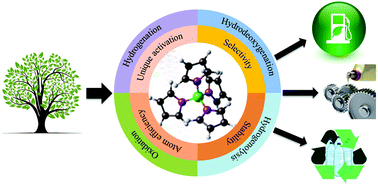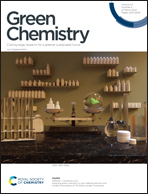Conversion of biomass-derived feedstocks into value-added chemicals over single-atom catalysts
Abstract
The selective transformation of biomass-derived platform chemicals into high-value chemicals has become one of the important topics of current research as the current chemical economy is shifting towards the increasing utilization of renewable feedstocks. However, the high oxygen content and complex functionalities of these platform molecules often create problems to achieve high selectivity towards desired products. Single-atom catalysts (SACs) are a promising class due to their selective nature and high atom efficiency to transform complex molecules with high selectivity at a reduced cost. Another excellent feature of SACs is their tunable active sites, which can be easily altered by well-developed synthetic strategies based on their targeted reactions. This review summarizes recent studies on the applications of SACs in the selective transformation of biomass-derived feedstocks into value-added products. A major focus is given on the catalyst design principle and the unique catalytic activities of SACs in each reaction (e.g., hydrogenation, hydrodeoxygenation, oxidation, etc.) with examples. Fundamental insights on the superior activities of SACs are also discussed in detail. At the end of this review, we have provided our perspectives on the design and use of SACs for biomass conversion at the industrial scale.

- This article is part of the themed collections: Green Chemistry Reviews and Green Chemistry Reviews


 Please wait while we load your content...
Please wait while we load your content...